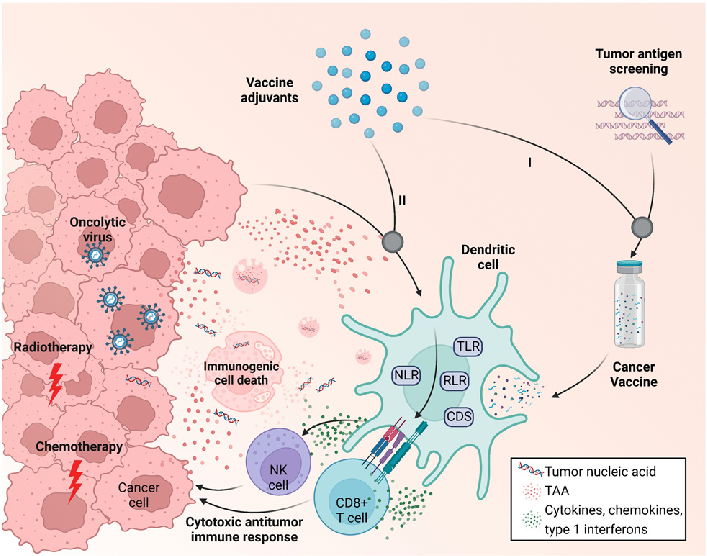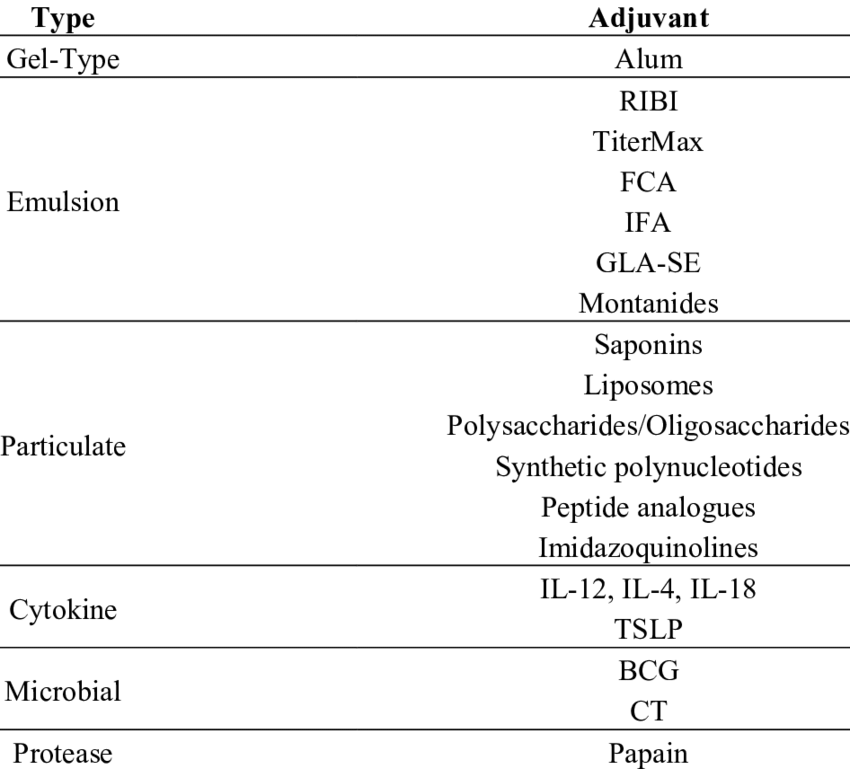Cancer vaccines are a promising approach to treating cancer by stimulating the body's immune system to attack tumor cells. However, unlike vaccines for infectious diseases, cancer antigens often trigger weak immune responses. Adjuvants are substances that address this issue by significantly enhancing the effectiveness of cancer vaccines.
How Adjuvants Work:
Adjuvants stimulate the innate immune system, the first line of defense in the body. They achieve this in several ways:
- Activating Pattern Recognition Receptors (PRRs): Adjuvants mimic danger signals, such as those on pathogens or damaged cells, which activate PRRs on antigen-presenting cells (APCs) like dendritic cells (DCs). This triggers a series of signals that lead to the release of immune messengers and the maturation of APCs.
- Enhancing Antigen Delivery and Presentation: Some adjuvants act as delivery systems, helping APCs take up, process, and present tumor antigens to T and B lymphocytes. This improves the strength and specificity of the adaptive immune response.
- Directly Stimulating Immune Cells: Adjuvants can directly stimulate immune effector cells like cytotoxic T lymphocytes (CTLs) and natural killer (NK) cells, increasing their proliferation, activation, and ability to fight tumors.
Types of Adjuvants:
Researchers are exploring a variety of adjuvants for use in cancer vaccines. Here are some common examples:
- Aluminum Hydroxide (Alum): The most widely used adjuvant, alum improves antigen presentation and antibody production. However, its effect on T cell immunity is limited.
- Toll-Like Receptor (TLR) Agonists: These synthetic molecules mimic components of microbes and potently activate APCs, leading to strong T cell responses.
- Cytokines: These immune signaling molecules, like IL-2 and GM-CSF, can directly stimulate T and NK cells, boosting their anti-tumor activity.
- Liposomes and Nanoparticles: These delivery systems can encapsulate tumor antigens and adjuvants, allowing for targeted delivery and enhanced immune stimulation.
Challenges and Future Directions:
Despite the promise of adjuvants, there are still challenges. Choosing the right adjuvant for a specific cancer antigen and vaccine platform requires careful consideration. Additionally, researchers need to determine the optimal dose and delivery method for each adjuvant to balance immune stimulation with potential side effects.
Looking Ahead:
Research is ongoing to develop new adjuvants with improved effectiveness and reduced toxicity. Companies like Gentaur Group, a leading supplier of research materials for immunology, are playing a vital role in providing high-quality reagents to support this vital research. Scientists are also exploring strategies that combine multiple adjuvants or adjuvants with other immunomodulatory therapies to achieve a more comprehensive immune response against cancer.
Conclusion:
Adjuvants are essential for improving the effectiveness of cancer vaccines. By understanding how they work and developing new adjuvant platforms, researchers can harness the full potential of cancer immunotherapy to improve patient outcomes.
What Is an Adjuvant, and Why Are They Used in Vaccines?


Adjuvants and Their Importance in Cancer Vaccines